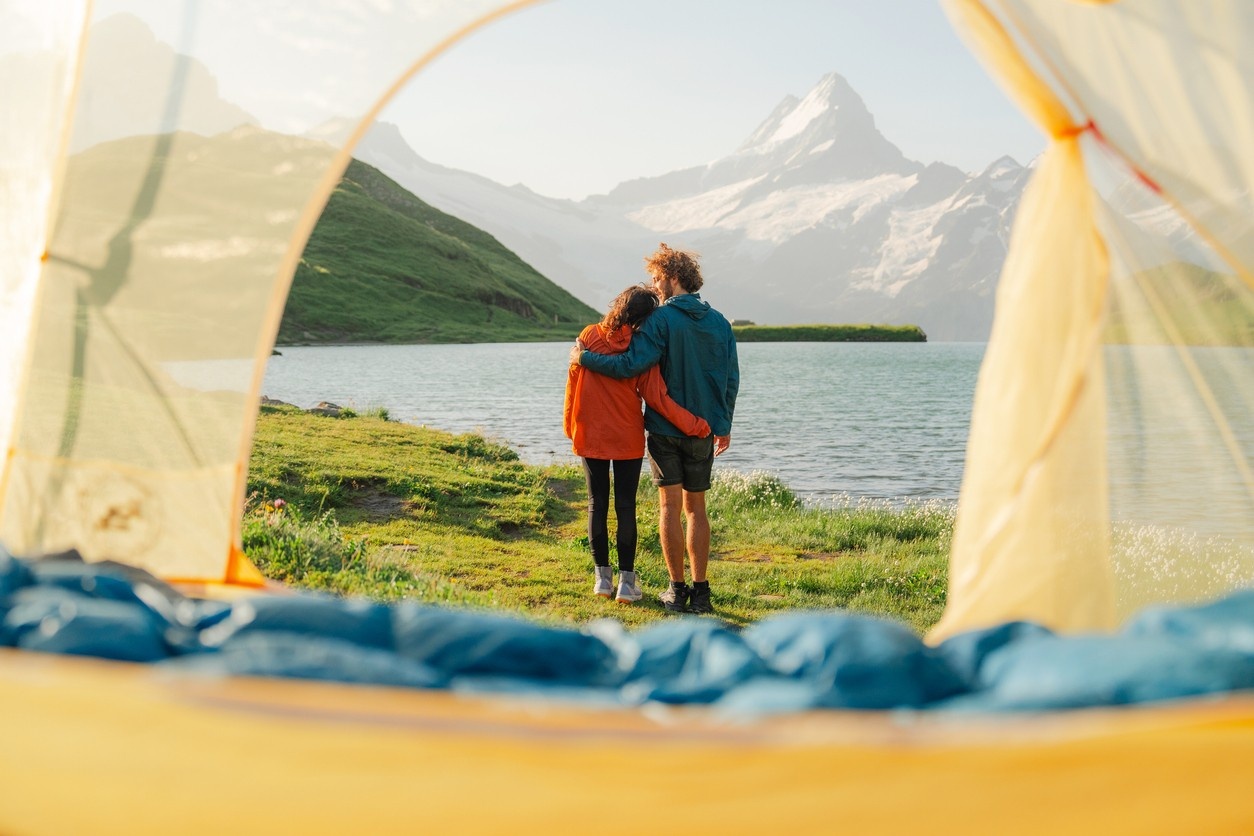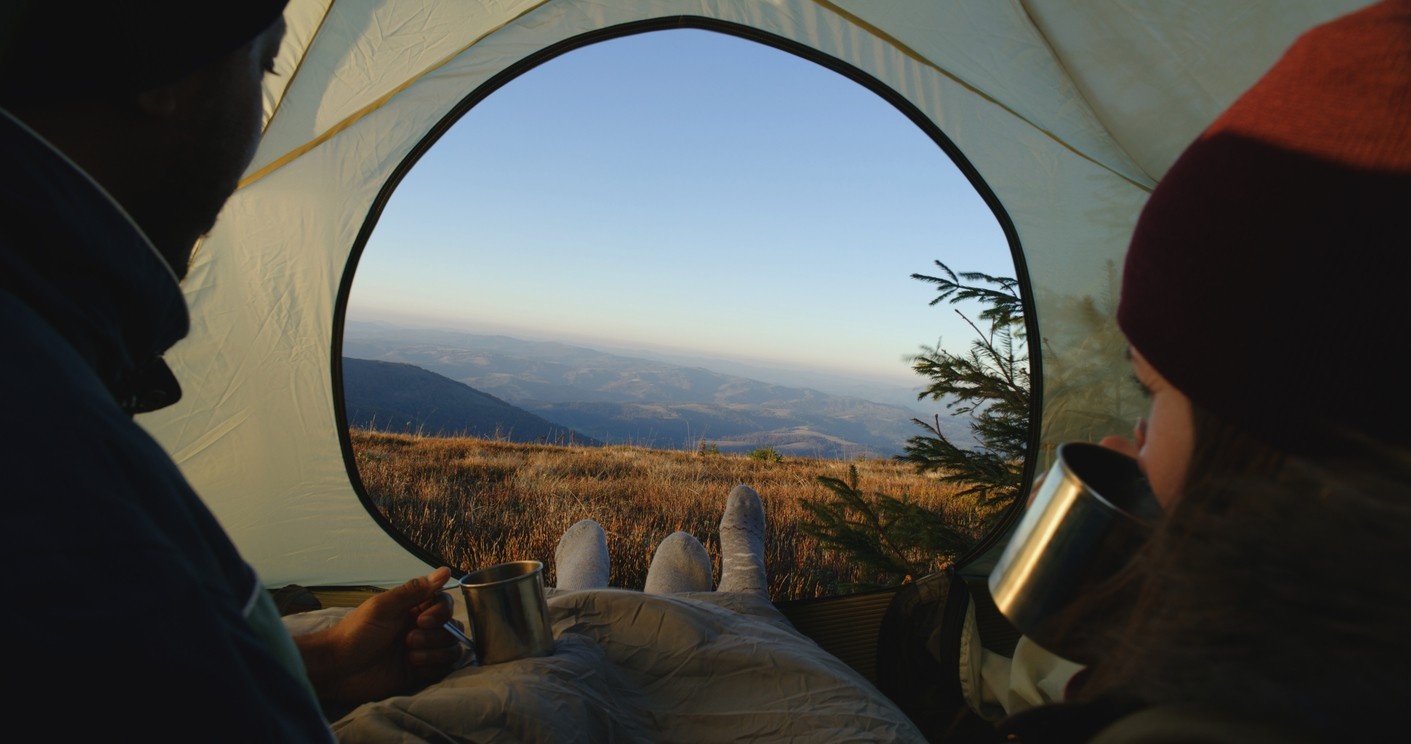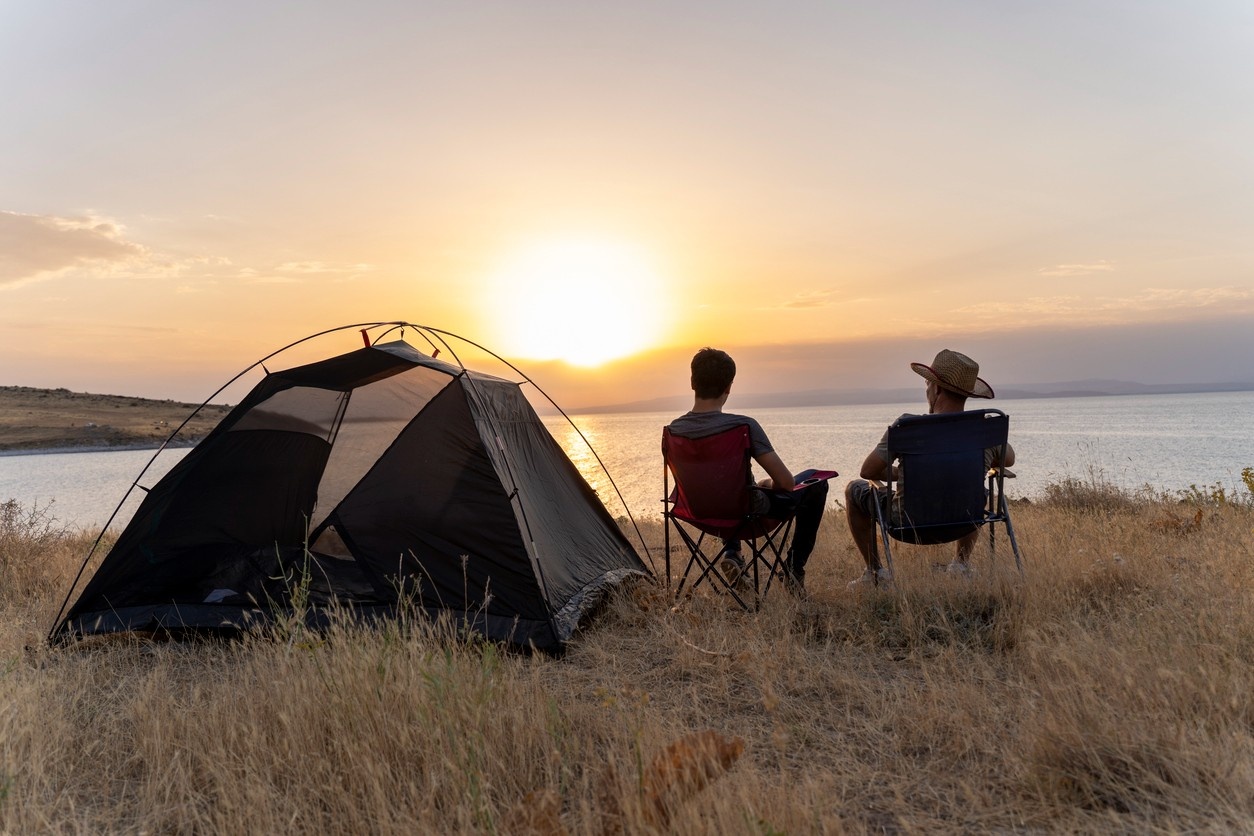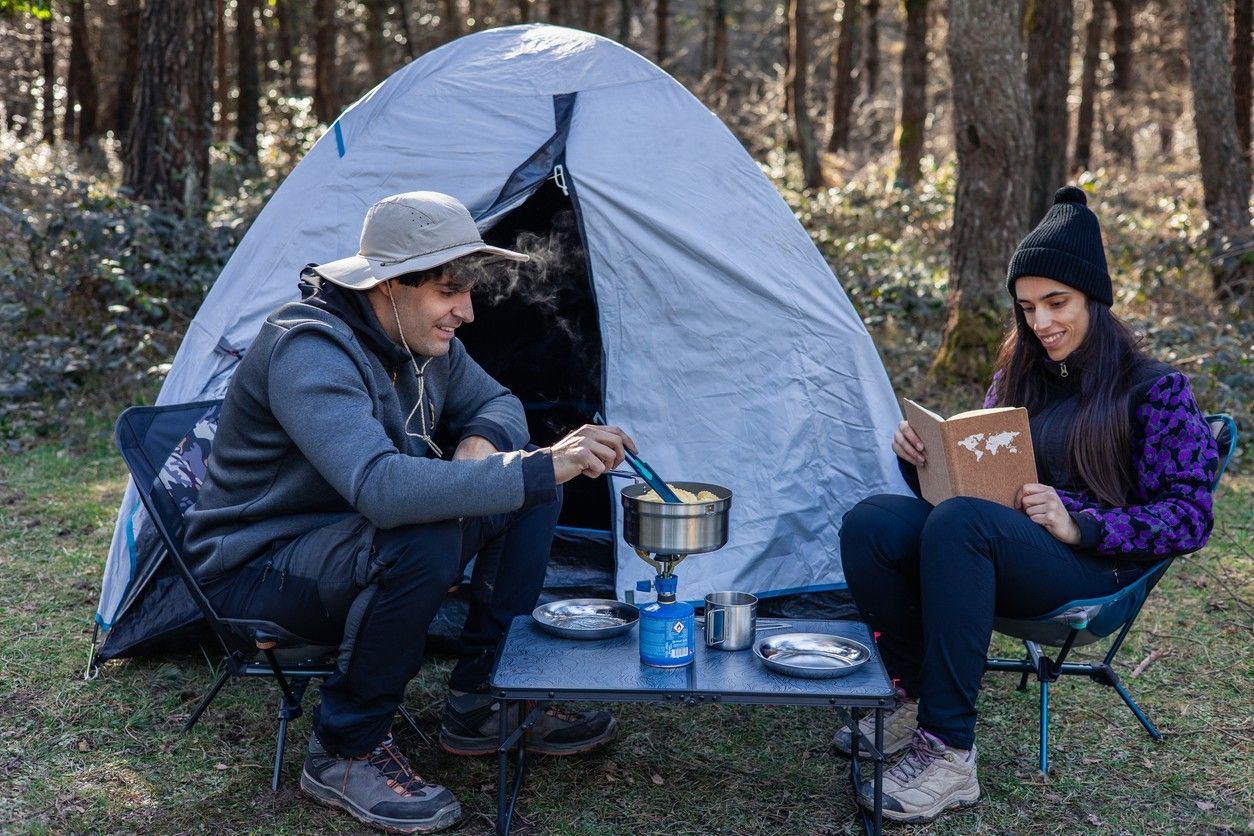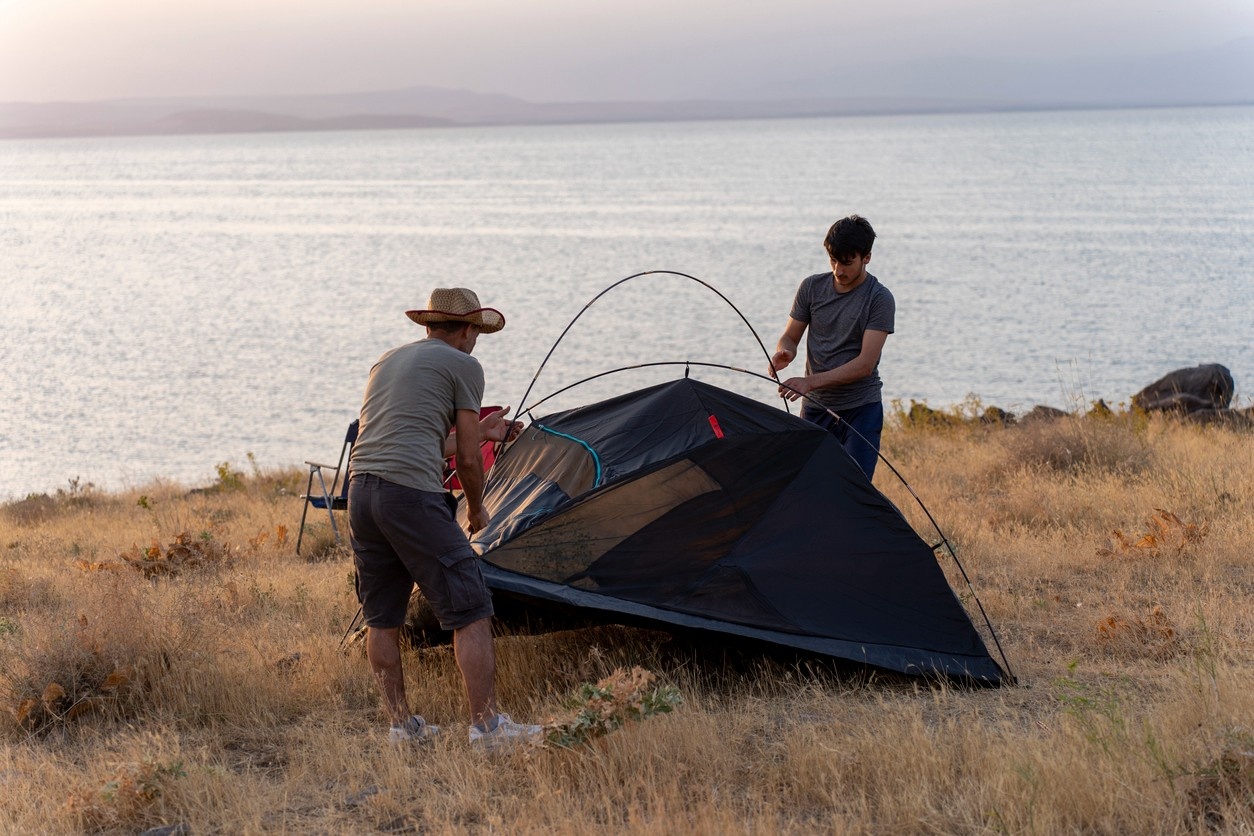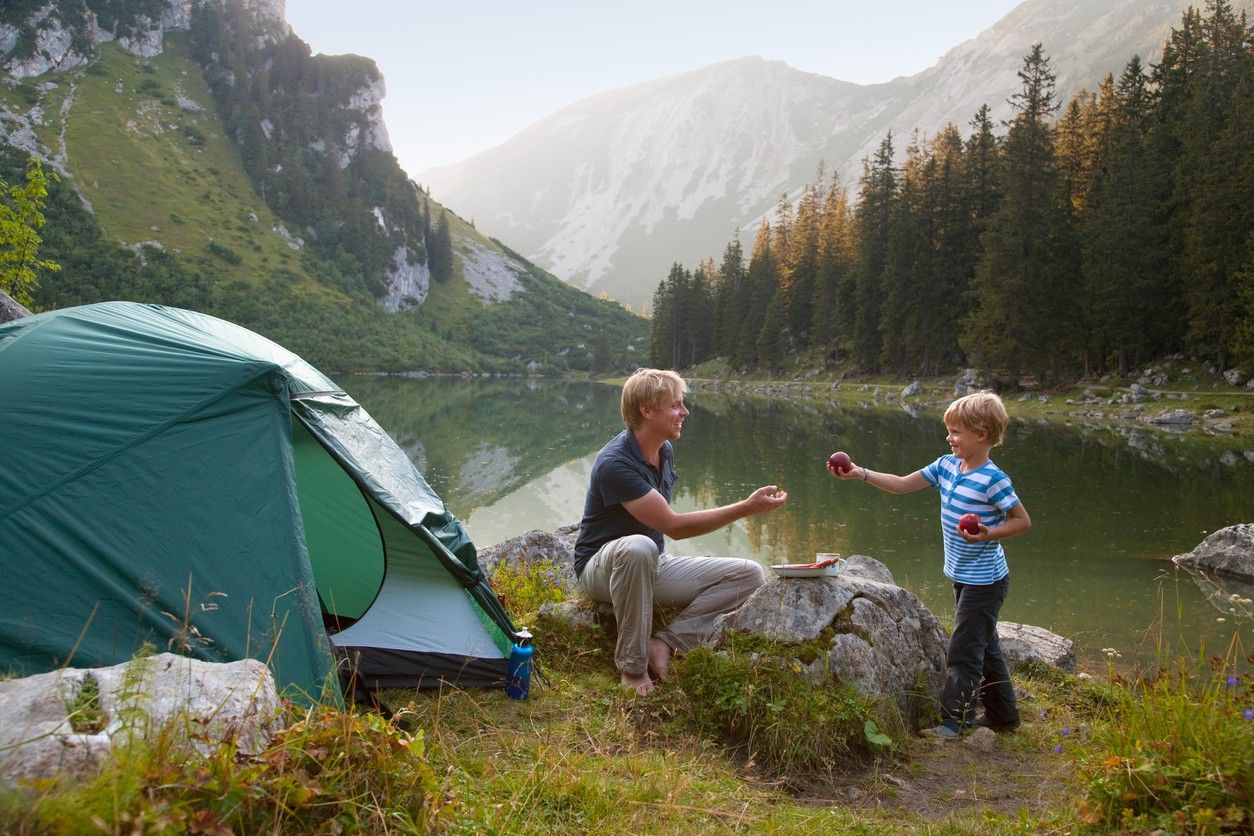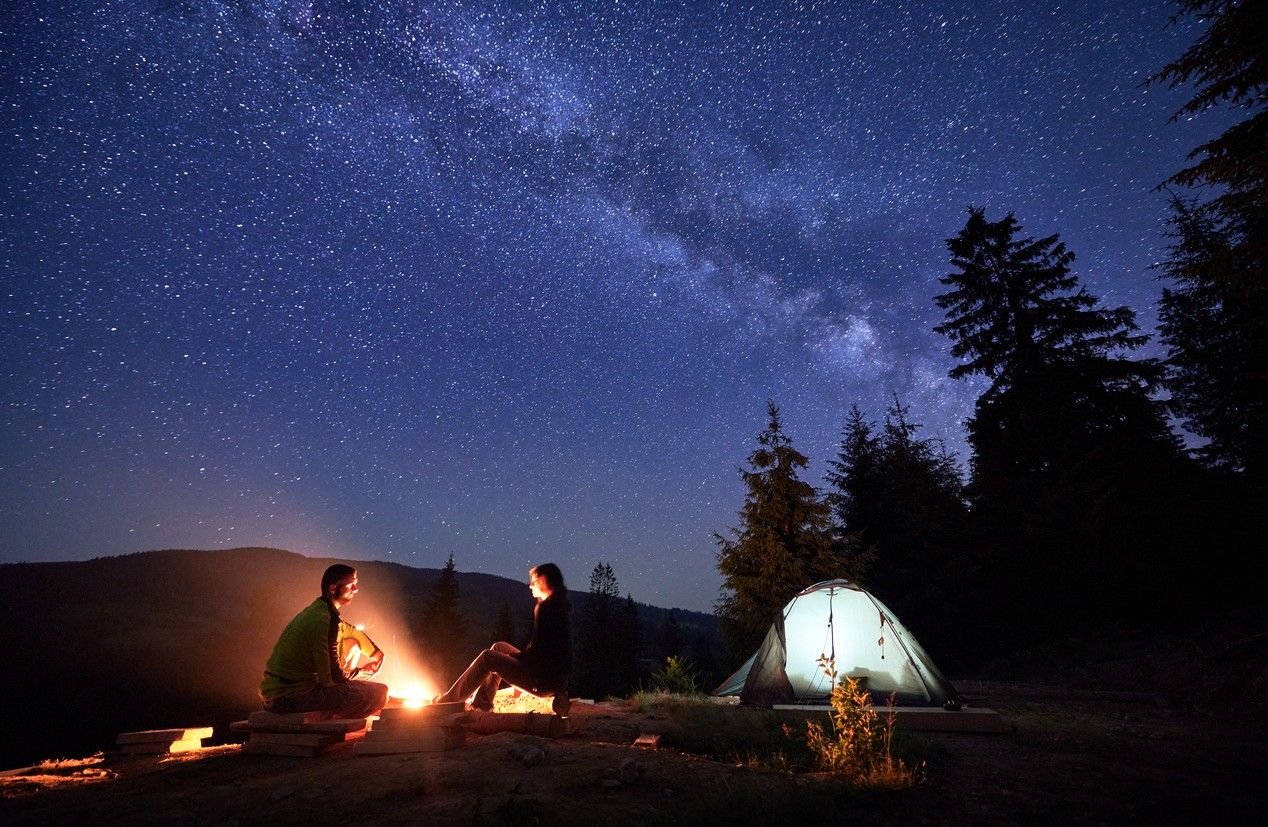Choosing the Ideal 2-Man Tent for Your Travels
A 2 man tent is a compact, lightweight shelter designed to accommodate two people comfortably during camping or backpacking trips. These tents offer a cosy and protected space to sleep, store gear, and take refuge from the elements. 2 man tents come in various shapes, sizes, and designs to suit different preferences and needs. They are an essential piece of equipment for any duo embarking on an outdoor adventure. The main advantages of a 2 man tent are its portability and ease of setup. Most models weigh between 2 to 4 kilograms, making them easy to carry in a backpack. Some pop-up tents can be pitched in mere seconds, while others require a few minutes of assembly. 2 man tents provide ample space for two sleeping bags and mats, with some extra room for gear storage. They offer a good balance of weight, size, and comfort for couples or friends sharing a tent.
When shopping for a 2 man tent, it's important to consider factors such as seasonality, material, weight, and features. 3-season tents are the most versatile and popular, suitable for camping from spring to fall. 4-season tents are designed for harsher conditions and can withstand strong winds and heavy snowfall. Tent materials should be durable, waterproof, and breathable. Lightweight fabrics like nylon and polyester are commonly used. Additional features to look for include double-wall construction, aluminium poles, factory-sealed seams, multiple doors, a full-coverage rainfly, and ample ventilation.
What To Consider When Choosing a 2-Man Tent?
When selecting a 2-man tent, there are several key factors to keep in mind to ensure you get the best tent for your needs. The type of camping you'll be doing, the seasonality and expected weather conditions, the tent materials, and the tent's dimensions and features all play important roles in determining the ideal tent. Carefully evaluating your priorities and preferences in each of these areas will help you narrow down the options and choose a tent that will provide reliable shelter and comfort on your adventures.
Type of Camping
The type of camping is a crucial factor to consider when selecting a 2-man tent. Different camping styles have varying requirements for tent size, weight, durability, and features. The main types of camping include backpacking, car camping, and expedition camping.
Backpacking
Backpacking involves carrying all of your gear on your back while hiking to remote campsites. For this type of camping, a lightweight and compact 2-man tent is essential to minimise the weight and bulk of your pack. Backpacking tents are designed to be as light as possible while still providing adequate protection from the elements. They often use ultralight materials like silnylon or Dyneema composite fabric (DCF) for the tent body and rainfly, and lightweight aluminium poles. These materials are more expensive than traditional tent fabrics but offer the best strength-to-weight ratio. Backpacking tents also tend to have a more streamlined design with fewer bells and whistles to save weight. They may have a single door and vestibule, a lower peak height, and a smaller floor area to reduce the overall tent size. However, they still need to be durable enough to withstand the rigours of the trail and provide a comfortable sleeping space for two people.
When choosing a backpacking tent, pay attention to the tent's packed weight and size, as well as its durability and weather resistance. Look for a tent with a minimum trail weight of around 2 to 3 pounds, which includes just the tent body, rainfly, and poles. The packed weight, which includes all the components like stakes and stuff sacks, should be under 4 pounds. Make sure the tent has a waterproof rating of at least 1500mm for the rainfly and floor, and that it has been seam-sealed or can be seam-sealed at home. Some popular 2 man backpacking tents include the Vango F10 Xenon UL and MSR Hubba Hubba NX. These tents offer a good balance of weight, durability, and livability for backpacking trips.
Car Camping
Car camping involves driving to a campsite and setting up camp near your vehicle. This type of camping allows for more gear and creature comforts since you don't have to carry everything on your back. For car camping, a larger and heavier 2-man tent is acceptable and often preferable for the added space and features. Car camping tents are typically made with heavier and more durable materials like polyester or nylon taffeta for the tent body and rainfly, and steel or fiberglass poles. These materials are less expensive than ultralight fabrics but are still reliable and long-lasting. Car camping tents often have a double-wall design with a separate tent body and rainfly for better ventilation and weather protection.
When choosing a car camping tent, prioritise livability and comfort features over weight savings. Look for a tent with ample floor space, high ceilings, and multiple doors and vestibules for easy access and gear storage. Consider additional features like gear lofts, pockets, and room dividers to help organise your living space. Make sure the tent has good ventilation with mesh panels and vents to prevent condensation buildup. Some popular 2-man car camping tents include the Vango Scafell 200 Tent. These tents offer a spacious and comfortable camping experience with plenty of room for two people and their gear.
Expedition Camping
Expedition camping involves camping in extreme weather conditions and remote locations, often for extended periods. This type of camping requires a specialised 4-season tent that can withstand heavy snow, strong winds, and extreme cold. Expedition tents are designed to be incredibly sturdy and weather-resistant, with features like reinforced poles, heavy-duty fabrics, and full-coverage rainflies. Expedition tents are typically made with high-denier nylon or polyester fabrics for the tent body and rainfly, and thick aluminium poles. They often have a geodesic or dome shape to shed snow and wind, and a low profile to reduce wind resistance. Expedition tents may have a single-wall design to save weight and reduce moisture buildup, or a double-wall design for added versatility. When choosing an expedition tent, prioritise strength, stability, and weather protection overweight and comfort. Look for a tent with a high waterproof rating of at least 3000mm for the rainfly and floor and a strong pole system with intersecting or hubbed poles. Make sure the tent has adequate guy points and stakes for securing it in high winds, and that it has been tested in extreme conditions.
Seasonality
Seasonality is another crucial factor to consider when choosing a 2 man tent. Tents are typically categorised by the number of seasons they are designed to withstand, ranging from 1-season to 4-season tents. Each category is suited for different weather conditions and camping styles.
1-Season Tents (Summer Tents)
1-season tents, also known as summer tents, are designed for use in warm, dry conditions with minimal wind and rain. These tents are the lightest and most affordable option, making them popular for casual car camping and festival camping. 1-season tents are typically made with lightweight, breathable materials like mesh and thin nylon. They often have large mesh panels for maximum ventilation and bug protection, and a simple rainfly that covers only the top of the tent. The rainfly may not extend to the ground, leaving the sides of the tent exposed to the elements. 1-season tents usually have a simple pole structure, such as a single cross pole or a dome shape, which provides enough stability for mild conditions. They may not have many guy points or stakes, as they are not designed to withstand strong winds. When choosing a 1-season tent, prioritise ventilation, bug protection, and ease of setup. Look for a tent with ample mesh panels and a simple, freestanding design that can be pitched quickly. Make sure the tent has a waterproof rating of at least 600mm for the rainfly and floor, which is sufficient for light rain and dew.
3-Season Tents
3-season tents are the most versatile and popular type of tent, designed for use in spring, summer, and fall conditions. These tents can handle moderate rain, wind, and cold temperatures, making them suitable for a wide range of camping trips. 3-season tents are typically made with a combination of breathable and water-resistant materials like ripstop nylon and polyester. They have a double-wall design with a separate tent body and rainfly, which provides better ventilation and weather protection than 1-season tents. The tent body usually has a mix of solid and mesh panels to balance ventilation and warmth retention, while the rainfly extends to the ground for full coverage. 3-season tents have a more robust pole structure than 1-season tents, often using a dome or tunnel shape with crisscrossing poles for added stability. They may have additional features like vestibules for gear storage, guylines for wind resistance, and vents for moisture control. When choosing a 3-season tent, consider the typical weather conditions you'll be camping in and the level of comfort you require. Look for a tent with a waterproof rating of at least 1500mm for the rainfly and floor and a pole system that can withstand moderate winds. Consider the tent's interior space, peak height, and storage options to ensure a comfortable living space.
4-Season Tents (Winter/Mountaineering Tents)
4-season tents, also known as winter tents or mountaineering tents, are designed for use in harsh, cold, and snowy conditions. These tents are the most durable and weather-resistant option, built to withstand heavy snow loads, strong winds, and extreme temperatures. 4-season tents are typically made with heavy-duty, waterproof materials like high-denier nylon or polyester. They have a low-profile, geodesic dome shape that sheds snow and wind efficiently and a full-coverage rainfly that extends to the ground. The tent body may have fewer mesh panels and more solid fabric to retain warmth and block out blowing snow. 4-season tents have the strongest pole structure of any tent category, using thick, aluminum poles in a crisscrossing or hubbed configuration for maximum stability. They often have multiple guylines and stake points for added wind resistance, as well as reinforced corners and stress points to prevent damage from snow and ice. When choosing a 4-season tent, prioritise strength, durability, weather resistance overweight and comfort. Look for a tent with a waterproof rating of at least 3000mm for the rainfly and floor and a pole system that can withstand high winds and snow loads. Consider the tent's ventilation options, as moisture management is crucial in cold conditions.
Tent Material
Tent material is a crucial factor to consider when choosing a 2 man tent, as it greatly impacts the tent's performance, durability, and overall quality. The most common materials used in tent construction are polyester, nylon, and canvas, each with its unique properties and advantages.
Polyester
Polyester is the most widely used material in modern tent manufacturing due to its excellent balance of affordability, durability, and performance. It is a synthetic fabric that is inherently water-resistant and can be further treated with coatings like polyurethane (PU) or silicone to enhance its waterproofing capabilities. One of the main advantages of polyester is its resistance to UV damage. Unlike nylon, polyester does not deteriorate quickly when exposed to sunlight, making it a better choice for long-term use and storage. Polyester also has a lower absorption rate than nylon, meaning it does not soak up as much water and dries faster when wet.
Polyester tents are available in various weights and thread counts, which are measured in deniers (D). A higher denier count indicates a thicker and more durable fabric, but also a heavier one. Most polyester tents use fabric ranging from 50D to 150D, with 68D being a popular choice for its balance of strength and weight. Some high-end polyester tents feature a ripstop weave, which is characterised by a grid-like pattern of reinforcing threads that prevent tears from spreading. Ripstop polyester is more tear-resistant and durable than standard polyester, but also more expensive. Polyester tents are suitable for a wide range of camping conditions and are a popular choice for family camping, car camping, and recreational backpacking. They offer good value for money, reliable performance, and easy maintenance.
Nylon
Nylon is another synthetic fabric commonly used in tent construction, particularly in lightweight and ultralight backpacking tents. It is known for its high strength-to-weight ratio, abrasion resistance, and elasticity. Compared to polyester, nylon is lighter and more compressible, making it an ideal choice for weight-conscious backpackers and thru-hikers. Nylon tents can pack down smaller and take up less space in a backpack, which is crucial for long-distance trips. However, nylon has some drawbacks compared to polyester. It is more susceptible to UV damage and can degrade over time when exposed to sunlight. Nylon also absorbs more water than polyester, which can lead to sagging and stretching when wet. To mitigate these issues, nylon tents are often treated with waterproof coatings and UV inhibitors.
Like polyester, nylon tents come in various deniers, with 10D to 40D being common in ultralight tents. Some high-end nylon tents use advanced fabrics like Dyneema Composite Fabric (DCF), which is incredibly lightweight, waterproof, and strong, but also very expensive. Nylon tents are best suited for experienced backpackers and thru-hikers who prioritise weight savings over durability and long-term use. They require more careful handling and maintenance than polyester tents and may not be as suitable for harsh weather conditions or extended trips.
Other Materials
In addition to polyester, nylon, and canvas, there are some other materials used in specialised or high-end tents. These include:
Cuben Fiber (Dyneema): An ultra-lightweight, waterproof, and strong laminate fabric used in top-of-the-line ultralight tents. It is extremely expensive and requires careful handling.
Silnylon: A nylon fabric coated with silicone on both sides for enhanced waterproofing and UV resistance. It is lightweight, strong, and slippery, making it ideal for stuff sacks and tent floors.
Tyvek: A synthetic material made from high-density polyethylene fibres, often used for tent footprints and ground cloths. It is lightweight, waterproof, and puncture-resistant.
When choosing a tent material, consider your camping style, budget, and the conditions you'll be facing. Polyester is a versatile and affordable option for most campers, while nylon is best for ultralight backpacking. Canvas is ideal for durability and breathability, but heavy and bulky. Ultimately, the best tent material is one that meets your specific needs and preferences.
Canvas
Canvas is a traditional tent material that has been used for centuries and is still popular among some campers for its durability, breathability, and classic aesthetic. Canvas is a heavy, dense fabric made from cotton or a cotton-polyester blend, and is often treated with waterproofing agents like paraffin or beeswax. The main advantage of canvas tents is their exceptional durability and longevity. Canvas is highly resistant to tears, punctures, and abrasions, and can withstand harsh weather conditions like strong winds and heavy rain. Canvas tents are also very breathable, allowing for good ventilation and reducing condensation buildup.
However, canvas tents have several drawbacks that limit their popularity among modern campers. They are very heavy and bulky compared to synthetic tents, making them impractical for backpacking or hiking. Canvas tents also take a long time to dry when wet, and can develop mildew or mold if stored while damp. Canvas tents are most commonly used for car camping, base camping, and hunting or safari expeditions, where weight and packed size are less of a concern. They are often more expensive than synthetic tents but can last for decades with proper care and maintenance. When choosing a canvas tent, look for one made from high-quality, tightly woven cotton duck fabric with a weight of 8 to 10 ounces per square yard. Make sure the tent is properly treated with waterproofing agents and has reinforced stress points and seams.
Floor Dimensions and Living Space
One of the most important factors to consider when selecting a 2 man tent is the floor dimensions and living space. The tent's floor area determines how much room you'll have for sleeping, changing clothes, and storing gear. Most 2 man tents have a floor area ranging from 25 to 35 square feet, which is enough space for two regular-sized sleeping pads and a small amount of gear. However, it's important to note that the stated capacity of a tent is often based on the minimum space required for two people to lie down side by side, without much room for extras. If you prefer more space to move around or store gear inside the tent, consider sizing up to a 3 man tent or looking for a 2 man tent with a larger floor area. When evaluating the floor dimensions, pay attention to the tent's shape and layout. Some tents have a rectangular or elongated shape, which provides more length for taller campers, while others have a square or tapered shape, which may feel more cramped. Consider the placement of doors, poles, and gear storage areas, as they can impact the usable living space inside the tent. It's also worth considering the tent's livability features, such as interior pockets, gear lofts, and hang loops, which can help organise your belongings and maximise the available space. Some tents even have built-in gear shelves or overhead storage compartments to keep your essentials within reach.
Key Features and Components of 2-Man Tents
Beyond fabrics and frames, two-person shelters incorporate an array of features and design elements to enhance livability, storage utility, weather resistance and ease of setup. Understanding these key components helps reveal strengths and compromises.
Doors and Vestibules
Doors provide ingress/egress while vestibules protect gear from the elements. Look for the following:
Single Door/Vestibule — The most basic and affordable option. Usually side entry. The vest provides gear space. The downside is occupants enter/exit through the same portal.
Dual Door/Dual Vestibule — Preferred for livability and storage. Occupants have their entries plus vest space. Added weight over single-door designs.
Convertible Vestibule Configs — On some models, vestibule doors roll away fully for nice views and extra elbow room on nice days while still offering quick weather protection when needed. Provides versatile wide open and enclosed setups without swapping parts.
Interior Height and Floor Space
Key metrics dictating comfort for living and storage inside:
Peak Height — Maximum interior height at tent centre, dictated by pole lengths. Look for 40+ inches to be able to sit up comfortably inside.
Wall Height — Vertical clearance around sides to peak height. Impacts the ability to sit upright on margins and the perception of spaciousness.
Floor Area — Total square footage of usable living and storage space. A vital metric that determines capacity relative to "2 people" claims from manufacturers. Widely variable between tent models and brands.
Waterproof Ratings and Seam Taping
While no tent is 100% dry in extended extreme downpours, attention to HH ratings and taping helps minimise interior storms. Keep the interior dry by verifying waterproofness claims and constructions:
HH Waterproof Ratings — Indicate the ability of the fabric surface to repel rain and moisture before it soaks in. Look for 1500mm to 3000mm ratings with higher being better.
Fully Seam Sealed Construction — Heat-welded seam tape applied over all major fly and floor seam stitching prevents leaks through holes from sewing needles. Greatly boosts water resistance overall.
Waterproof Bathtub Style Floors — Extend higher up lower walls to block groundwater intrusion and splash back. Four to eight inches are common heights.
Light Pockets and Loops
Abundant visibility makes chores easier and tents feel more cave-like when unlit at night. Amenities that improve illumination options:
Hanging Light Loops — Located on the ceiling with Velcro opening for suspending battery-powered lanterns internally. Help reduce glare.
Media Pockets — Mesh sleeves to stash small headlamps, flashlights or glowsticks. Aid visibility for tasks like cooking or gear access at night.
Reflective Points — Interior patches of reflective fabric that cast light from headlamps widely. Alternative to artificial light sources
Added Extras and Options
Factor cost and necessity of upgrades into decision criteria. Stick with basics for simplicity or go deluxe for ultimate camping pampering. While not mandatory, nice-to-have upgrades for those with ample budget:
Gear Loops and Pockets — Help tidy gear droppings scattered about the living space. Located on walls, corners and ceilings.
Overhead Storage Netting — Hammock-style mesh nets create more capacity to organise essentials in easy reach.
Divider Curtains — On larger 2+ person tents, centred curtains split the interior into two rooms for privacy.
Footprints and Fast Pitch Options — Separate or permanently attached ground sheets speed site setup. Fastpitch systems have pole frameworks that Clip quickly into the tent body for rapid assembly. Both come at a weight penalty, however
Essential Equipment to Pair with a 2-Man Tent
In addition to a high-quality 2-man tent, there are several essential pieces of gear every camper should have to ensure a safe and comfortable outdoor experience. Key items include a sleeping bag and sleeping pad for warmth and cushioning, a headlamp for nighttime visibility, rain gear for wet weather protection, a camping stove and cookware for meal preparation, a water filtration system for safe hydration, and a first-aid kit for handling minor injuries. Selecting equipment that complements your tent and matches the conditions you'll be facing will help you build a comprehensive camping kit that meets all your needs in the backcountry.
Sleeping System — In addition to a high-quality 2 man tent, there are several essential pieces of equipment that every camper should have to ensure a comfortable and safe outdoor experience. First and foremost, you'll need a sleeping bag and a sleeping pad. Choose a sleeping bag with a temperature rating appropriate for the conditions you'll be camping in. Down sleeping bags are lightweight and compressible but lose their insulating properties when wet. Synthetic sleeping bags are heavier but retain warmth even when damp. Mummy-style bags are more thermally efficient, while rectangular bags offer more room to move around. Pair your sleeping bag with an insulated sleeping pad to provide cushioning and prevent heat loss to the ground. Air pads are lightweight and comfortable, while foam pads are durable and affordable.
Lighting — Next, consider your lighting needs. A reliable headlamp is essential for navigating the campsite at night and performing tasks like cooking and reading. Look for a headtorch with multiple brightness settings, a red light mode to preserve night vision and a long battery life. Bring extra batteries or choose a rechargeable model. You may also want to bring a lantern or string lights to illuminate your tent's interior.
Rain Gear — To stay dry in wet conditions, pack a set of rain gear. This includes a waterproof jacket and pants, as well as gaiters to keep your feet dry. Look for rain gear made with breathable fabrics like Gore-Tex or eVent to prevent overheating and sweat buildup. Make sure your rain gear fits over your other clothing layers and has features like adjustable hoods and pit zips for ventilation.
Cooking and Water Treatment — Other essential items include a camping stove and cookware for preparing meals, a water filtration system or purification tablets for obtaining safe drinking water and a first-aid kit for treating minor injuries and illnesses. Bring a repair kit with items like duct tape, spare tent poles, and seam sealer to fix any damage to your tent. Pack a multi-tool or knife for various campsite tasks, and bring a map and compass or GPS device for navigation.
Personal Comfort and Hygiene — Don't forget about personal hygiene and comfort items. Pack biodegradable soap, a quick-drying towel, and a toiletry kit with essentials like toothpaste, sunscreen, and insect repellent. Bring a camp pillow or stuff sack filled with clothing for a comfortable headrest. Wear moisture-wicking, quick-drying clothing in layers to adapt to changing temperatures and conditions. Choose clothing made with synthetic fabrics or merino wool, which are lightweight, odour-resistant, and insulating.
By pairing your 2 man tent with these essential pieces of equipment, you'll be well-prepared for any camping adventure. Remember to always follow Leave No Trace principles and practice good campsite hygiene to minimise your impact on the environment.
Related articles

Let us know you agree to cookies
We use marketing, analytical and functional cookies as well as similar technologies to give you the best experience. Third parties, including social media platforms, often place tracking cookies on our site to show you personalised adverts outside of our website.
We store your cookie preferences for two years and you can edit your preferences via ‘manage cookies’ or through the cookie policy at the bottom of every page. For more information, please see our cookie policy.

